Native Son: Ruminations from Mexico
Just landed stateside from seven days in Yucatan. Cancun to Chichen Itza to Merida; returning through Mani and a mind-altering maze of tiny villages. Part vacation; part research for my almost-finished novel. No TV, no internet, no Facebook…no kidding. They have it; I chose to eschew it. Since a picture speaks a thousand words, I’ll let them do most of the talking.
Chichen Itza is an ancient Mayan city centered around a large pyramid named El Castillo, or the Temple of Kukulkan. Partially restored now, it hosts literally two million visitors each year, which necessitated a ban on climbing the structures since 2006. Employing survival skills learned during a harrowing prior personal relationship, I am able to effectively block out the audial and visual noise of the crowds and “become one” with the ruins…and the iguanas, which majestically rule the site these days.
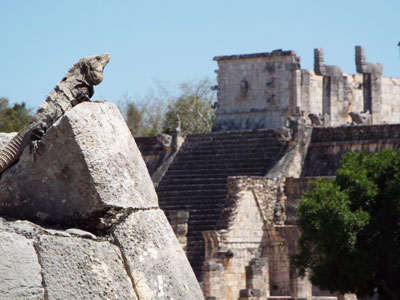
A local iguana surveys his domain at Chichen Itza. (All photos by Steven Chamblee.)
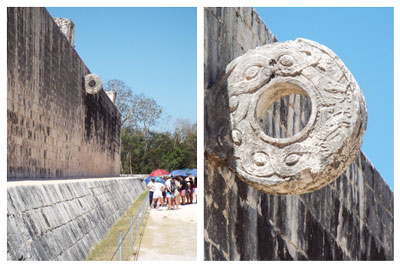
The Grand Ballcourt at Chichen Itza.
Color me skeptical, but I cannot get my mind to believe the guides who keep proudly announcing that The Grand Ball Court (545’ x 225’) was used for playing Pok-A-Tok. I just don’t think it’s humanly possible to get an eight-pound rubber ball through a 20” hole mounted about twenty feet off the ground…using only your hips to move the ball. (Yes, I’ve seen videos of Pok-A-Tok being played…and it took two teams of eight players about four minutes to put the ball through a ring mounted a mere three feet off the ground.) All that being said, I can’t even begin to figure out how the Mayans built the whole city—monstrous-sized, precision-honed, intricately-carved stones forming huge structures that are so perfectly aligned with the sun that specific shadow patterns appear during the solstices and equinoxes…and nary a power tool within centuries. Hmmm…maybe putting a rubber ball through a hole isn’t such a big deal after all.
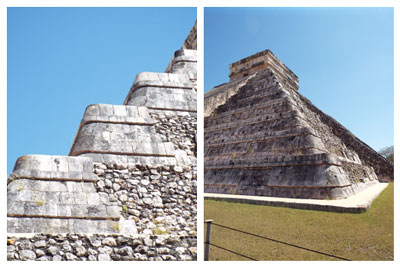
Precision stonework of the 98 foot-tall, 181 foot equal-sided Temple of Kukulkan.
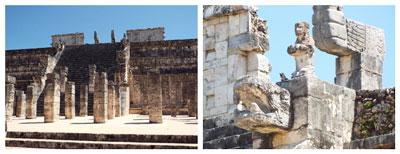
The Templo de los Guerreros (Temple of the Warriors), complete with an iguana (look close!) above the carved head. Click for larger view of photos.
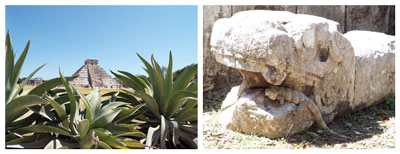
Agaves help to screen the crowds (left), and an iguana finds some shade.
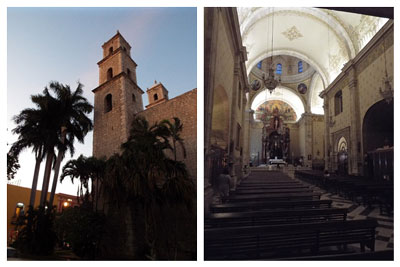
Rectorio de Jesus, in Merida, built using stone from ancient Mayan temples.
I head over to Merida to perform a little research on churches that play pivitol roles in my upcoming novel. Internet research simply cannot convey the feeling and scope of a personal visit. The massive, powerful stature and metaphysical energy of the cathedral simply has to be experienced to be understood. It was beyond anything I ever imagined.
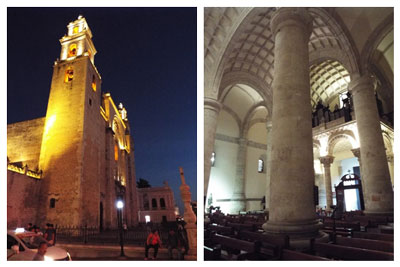
Caterdral de Mérida, with its massive stone pillars and huge vaulted ceiling, was begun in 1562 and completed in 1598. Cristo de la Unidad was created to symbolize unity between the Catholic Church and the Mayan people.
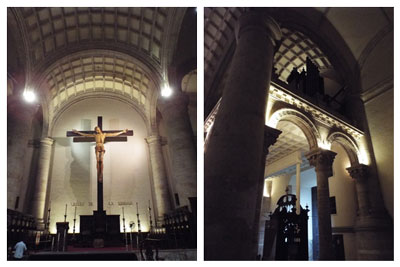
Caterdral de Mérida
I later made my way to Maní, about eighty miles southeast of Merida, to visit another church, the Parroquia y Convento de San Miguel Arcángel. The nave of the church was similar to what I expected, but the many cobbled passages that wound through the building, the little secret gardens growing seemingly everywhere, and the many beautiful verandas were a complete surprise to me. Hummingbirds, too!
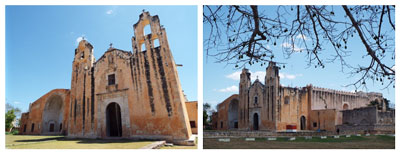
In the town of Maní, which has been continuously occupied for more than 4000 years, the central feature is the papaya-hued Parroquia y Convento de San Miguel Arcángel, completed in 1549. It, too, was built of stones from ancient Mayan temples. Note the unusual open chapel on the left side.
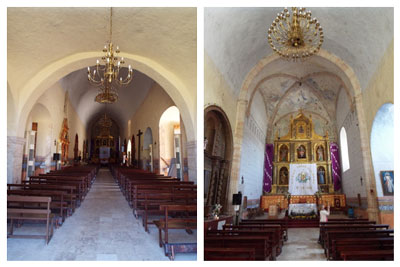
Parroquia y Convento de San Miguel Arcángel
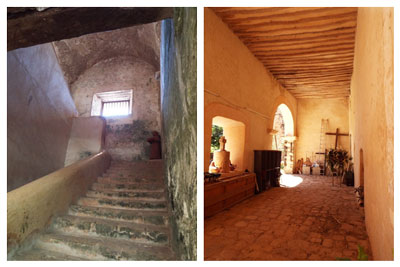
Designed as a self-sustaining entity, a myriad of passageways, stairwells, gardens, courtyards, vestibules, and loggias surround the parroquia, both inside and outside the protective stone walls.

Parroquia y Convento de San Miguel Arcángel
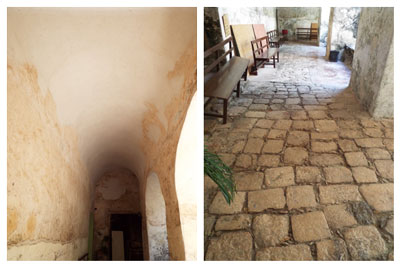
Parroquia y Convento de San Miguel Arcángel
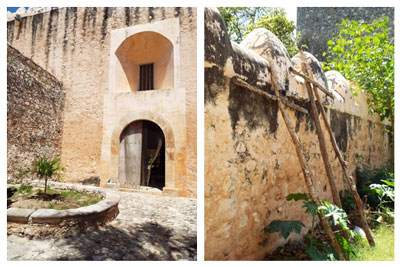
Parroquia y Convento de San Miguel Arcángel
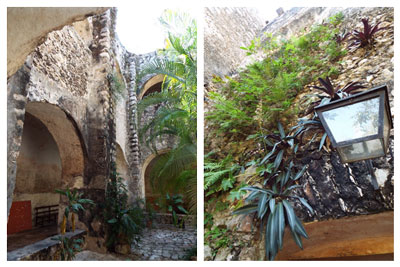
Lush tropical plants grow in secluded courtyards and even up the stone walls.
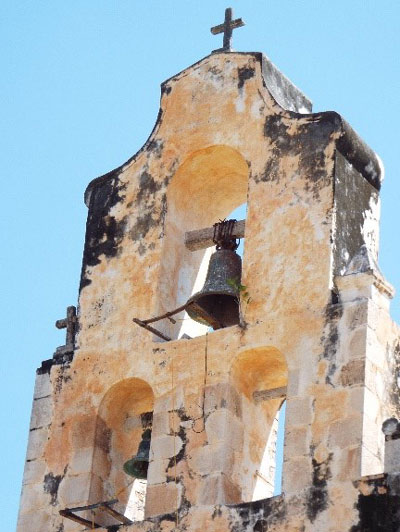
Aged bronze bells in the espanada-styled bell tower are still rung daily.
After a dizzying series of turns and conquering the Sierra Topes, I arrive back in Cancun…which is like another country to itself. Travelers from around the world, swanky shops, plush resorts…and everybody speaks English, or actually, American. If you’ve ever been to England, you know that Americans do not speak English.
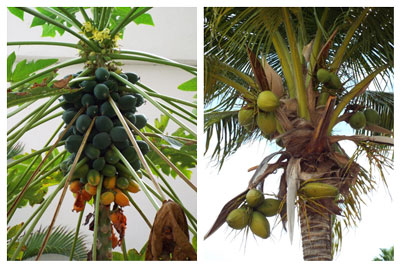
Back in Cancun, Papayas and Coconuts are simply part of the landscape.
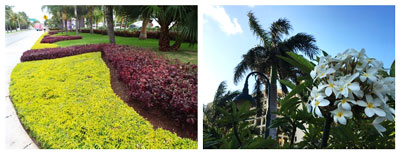
Sculpted Alternanthera along the main boulevard. Plumeria and palms at the Royal Resort Sands.
I visit the Museo Maya de Cancun. Dazzled by the brilliant modern architecture and kaleidoscopic sculptures outside, I enter the museum to view a treasure trove of wondrous artifacts left by the ancient Mayans. An hour later, I feel a little hollow as I depart. I feel like I have learned nothing about the Mayan people. I don’t know what an ancient Mayan looked like, how they dressed, what they ate, how they sang or danced. Every artifact is presented as if it has a deeply religious context, and nothing else. Every piece of pottery is sacred and ceremonial; each bead of a necklace symbolizes a deep connection to the gods. Every event pays devout homage to a holy deity. Really? No bowl just for fruit? No necklace as a gift of love? No games for fun and entertainment? I wondered if a future culture looked at us the same way…they might write something like this:
“Every Sunday, a hundred thousand worshippers from the Tribe Dallas descend upon the holy temple of Jerome. Once inside, they imbibe in brewed herbal libations and eat tubular porcine effigies in preparation for the ceremonial homage to the god Wilson. Gold and silver idols of Wilson fill shiny shrines; possession of even one of the shiny idols is the greatest desire of warriors and worshippers alike. As the local warriors arrive in the temple, dressed in brightly-colored costumes of blue and silver, the mass of worshippers explodes into a frenzy of screams, hoots, and whistles. The warriors themselves jump with jubilation and dance athletically along the sides of the sacred green carpet, which is embellished with a series of consistent parallel lines and a bright-colored icon sacred to the tribe. As the rival tribe enters, many of the worshippers scream and chant, often proudly exclaiming petitions for the immediate death of the rivals. A long-drawn contest between the warrior tribes soon ensues, complete with violent beating, powerful grappling, and exuberant body-slamming. The carnage continues for almost three hours, but is so exhausting, the warriors are called back to their respective armories halfway through, just to make sure they have the energy to enthusiastically pummel each other to the finish. In the end, the victors, although tired and injured, find energy enough to dance themselves into a frenzy, scream prayers into the sky, and perform a bizarre baptism of sorts on their leader with an orange potion concocted just for such celebrations.”
Imagine what a bored archeologist could do with hockey…
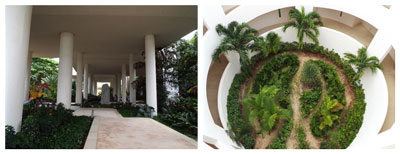
Fantastic modern architecture outside the museum greatly contrasts the art of the ancients within. Or does it?
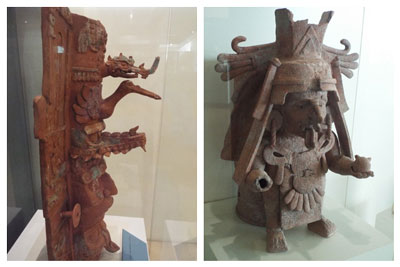
Museo Maya de Cancun
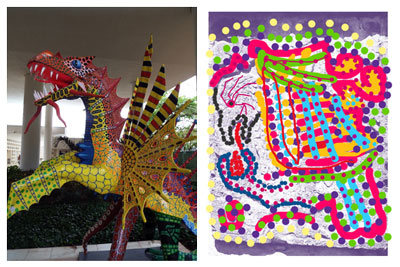
Comparing the old with the new. Perhaps someday someone will dig up our modern art…and wonder about the bizarre gods we worshipped. Hmmm… (Sorry about my poor computer art…first time!)
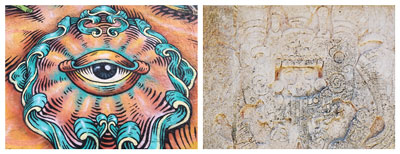
Museo Maya de Cancun
Seven days to experience different cultures: old, new, luxurious, sparse, colorful, drab. (Oh yeah—did you know those ancient Mayan structures were painted bright colors back in the day?) But I’ll bet I experienced something that even Mayan royalty did not…
SWIMMING WITH DOLPHINS!!!

I need a road trip! Let me know if you’d like me to come and speak to your group sometime. I’m low maintenance, flexible, and you know I like to go just about anywhere. No city too big; no town to small. Just send me an e-mail at stevenchamblee@yahoo.com and we’ll work something out.
Come out and see me at Chandor Gardens! Located in the heart of Weatherford’s Historic District, Chandor Gardens is the perfect place to get away and enjoy the simple pleasures of life that can only be found in gardens. Call 817-613-1700 or visit www.chandorgardens.com for details.
